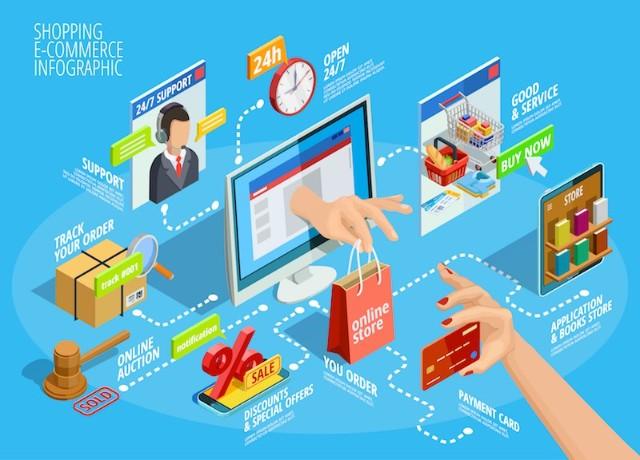ONDC - Open Network for Digital Commerce Explained

In this article, you will learn about the ONDC platform, how it works, its significance, benefits, and key features it offers to the Indian retail industry.
Preface:
India is witnessing a massive digital transformation over the last few years. The success of initiatives like AADHAR, UPI, FasTag, National Digital Health Mission, etc is a testimony to that. ONDC is the next revolution in Indian e-commerce and it will play an important role in creating a level playing field for all the big and small retailers in India. It’s expected to boost the MSME sector in India.
What is ONDC?
The full form of ONDC is Open Source Digital Commerce. On December 31, 2021, Open Network for Digital Commerce (ONDC) was incorporated as a non-profit organization.
It is designed to act as an alternative to corporate-controlled e-commerce websites like Amazon and Flipkart.
Cash-rich companies like Flipkart and Amazon, with backing from venture capitalists, have created monopolies in the Indian retail markets. With huge access to capital and control over digital advertising; these companies have made it difficult if not impossible for small businesses to compete.
The Indian government aims to solve this problem by creating a neutral platform, open to all. This platform will bring sellers and buyers together where each participant brings in their products and services.
How does ONDC platform work?
The ONDC platform will set protocols for cataloging, vendor matching, price discovery, etc. This means vendors will no longer have to create separate catalogs for each platform and even maintain inventory separately.
The buyers, on the other hand, can purchase from any seller on any platform, and even transfer payments seamlessly.
You may draw analogies to that of UPI aka Unified Payment Interface - the underlying protocol used by all payments apps in India - Google Pay, PayTM, PhonePe, MobiKwik, etc. UPI allows a user of Google Pay to send and receive payment from a user of PhonePay easily.
The ONDC platform will also allow for very efficient last-mile delivery of goods. The sellers do not have to worry about who will bring the logistics services. They simply need to make their digital catalog available to the platform and receive orders.
The logistics will be handled by an independent service provider. It is expected that ONDC will generate employment in large numbers.
A small trader on the ONDC platform will see a request for goods and can say “hey, I am available just 500 meters from your location; and I can deliver it to you quickly”.
Is ONDC a platform?
Although we are referring to ONDC as a platform, it’s not. The ONDC will be in-charge of the protocols and standards that will allow interoperability for multiple e-commerce platforms.
These protocols and standards will be open-sourced.
Why is ONDC so important?
There are following major emerging trends that are shaping the need for ONDC.
1. Offline to Online:
The COVID-19 pandemic has accelerated the transition from online to offline. Several naysayers of online have realized the importance of online commerce. In the coming days, online commerce is estimated to grow exponentially.
2. Advertising-led to Transaction-led Internet:
The western model of advertising-led Internet is being replaced by transaction-led Internet. As Nandan Nilekani says, in the west in the last 20 years, the rise of the Internet was fueled by Internet advertising. That’s how the corporations like Facebook, Google, and Amazon made money.
However, in India, the online advertising industry is very limited. That is why India will be a transaction-led Internet economy.
3. Movement from department stores to consumer’s doorsteps
Indian consumers have gotten used to the home-delivery model of goods and food items. Especially during the pandemic times, doorstep deliveries skyrocketed.
This trend is going to get even bigger in the coming years. The ONDC platform will ride on this trend.
4. Unbranded to branded
Nandan Nilekani says the Indian consumers are moving from unbranded to branded. There are branded soaps, branded rice, branded clothing, etc., and all of them want access to the markets.
5. Modernization of millions of Indian traders
The GST system, new-edge startups, and payment systems like UPI have allowed a large number of Indian traders to adopt digital systems for both payments and taxation. They are now ready to participate in the new ecosystem for merchants and consumers.
6. Prepaid to Postpaid
The Indian mobile companies have a big role in the transition of Indian consumers to adopt the prepaid system. Modern fintech startups will play a big role in facilitating credit at scale. For example, the ‘buy now, pay later’ model is gaining momentum in India.
The sellers will also have access to the credits through account aggregators. All this means is that everybody now has a chance to leverage the ecosystem that ONDC is planning to build.
ONDC Interfaces
A whole new set of delivery companies will emerge out of the ONDC ecosystem that specializes in deliveries - for example, 10-minute delivery.
ONDC will allow interaction and transaction via multiple interfaces. For example, Indian consumers will be able to speak in Indian languages for transactions. It’s expected that there will be new innovations on this front happening independently.
Fast Adoption of ONDC
Nilekani says the adoption of ONDC will be super fast. The conditions, people, and government commitment is there. It took us 9 years to take AADHAR to a billion people. UPI took 5 years to go from 0 to 4 billion in transactions but ONDC will be much faster because we know how to do it.
